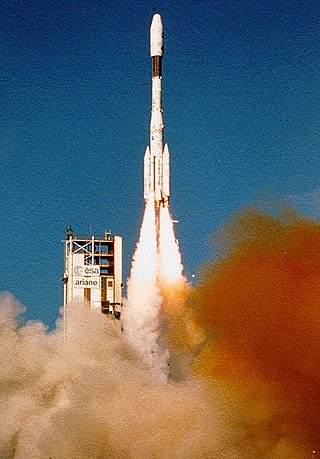
Ariane is a series of European civilian expendable launch vehicles for space launch use. The name comes from the French spelling of the mythological character Ariadne. France first proposed the Ariane project and it was officially agreed upon at the end of 1973 after discussions between France, Germany and the UK. The project was Western Europe's second attempt at developing its own launcher following the unsuccessful Europa project. The Ariane project was code-named L3S.
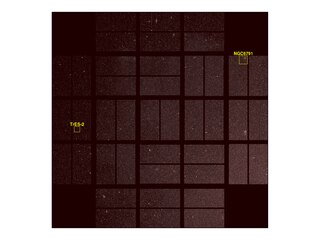
In astronomy, first light is the first use of a telescope to take an astronomical image after it has been constructed. This is often not the first viewing using the telescope; optical tests will probably have been performed to adjust the components.
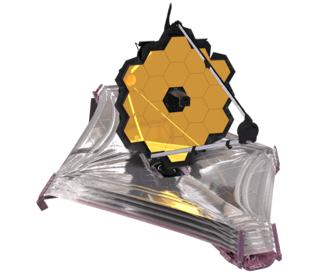
The James Webb Space Telescope (JWST) is a space telescope designed to conduct infrared astronomy. Its high-resolution and high-sensitivity instruments allow it to view objects too old, distant, or faint for the Hubble Space Telescope. This enables investigations across many fields of astronomy and cosmology, such as observation of the first stars and the formation of the first galaxies, and detailed atmospheric characterization of potentially habitable exoplanets.

The Columbia Accident Investigation Board (CAIB) was an internal commission convened by NASA to investigate the destruction of the Space Shuttle Columbia during STS-107 upon atmospheric re-entry on February 1, 2003. The panel determined that the accident was caused by foam insulation breaking off from the external fuel tank, forming debris which damaged the orbiter's wing, and that the problem of "debris shedding" was well known but considered "acceptable" by management. The panel also recommended changes that should be made to increase the safety of future shuttle flights. The CAIB released its final report on August 26, 2003.
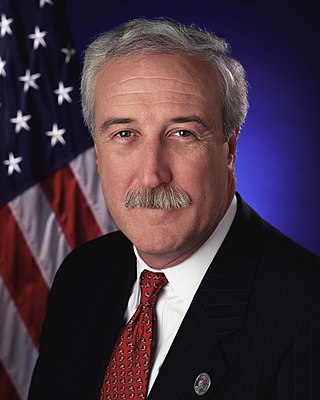
Sean Charles O'Keefe is a university professor at Syracuse University Maxwell School, former chairman of Airbus Group, Inc., former Secretary of the Navy, former Administrator of NASA, and former chancellor of Louisiana State University (LSU). He is a former member of the board of directors of DuPont.

James Edwin Webb was an American government official who served as Undersecretary of State from 1949 to 1952. He was the second Administrator of NASA from February 14, 1961, to October 7, 1968. Webb led NASA from the beginning of the Kennedy administration through the end of the Johnson administration, thus overseeing each of the critical first crewed missions throughout the Mercury and Gemini programs until days before the launch of the first Apollo mission. He also dealt with the Apollo 1 fire.

The American Computer & Robotics Museum (ACRM), formerly known as the American Computer Museum, is a museum of the history of computing, communications, artificial intelligence and robotics that is located in Bozeman, Montana, United States.

New York Film Academy – School of Film and Acting (NYFA) is a private for-profit film school and acting school based in New York City, Los Angeles, and Miami. The New York Film Academy was founded in 1992 by Jerry Sherlock, a former film, television and theater producer. It was originally located at the Tribeca Film Center. In 1994, NYFA moved to 100 East 17th Street, the former Tammany Hall building in the Union Square. After 23 years of occupancy, the academy relocated from Tammany Hall to 17 Battery Place.

John Cromwell Mather is an American astrophysicist, cosmologist and Nobel Prize in Physics laureate for his work on the Cosmic Background Explorer Satellite (COBE) with George Smoot.

The National Aeronautics and Space Administration is an independent agency of the U.S. federal government responsible for the civil space program, aeronautics research, and space research. Established in 1958, it succeeded the National Advisory Committee for Aeronautics (NACA) to give the U.S. space development effort a distinct civilian orientation, emphasizing peaceful applications in space science. It has since led most of America's space exploration programs, including Project Mercury, Project Gemini, the 1968–1972 Apollo Moon landing missions, the Skylab space station, and the Space Shuttle. Currently, NASA supports the International Space Station along with the Commercial Crew Program, and oversees the development of the Orion spacecraft and the Space Launch System for the lunar Artemis program.

The 2012 National Reconnaissance Office space telescope donation to NASA was the declassification and donation to NASA of two identical space telescopes by the United States National Reconnaissance Office. The donation has been described by scientists as a substantial improvement over NASA's current Hubble Space Telescope. Although the telescopes themselves were given to NASA at no cost, the space agency must still pay for the cost of instruments and electronics for the telescopes, as well as the satellites to house them and the launch of the telescopes. On February 17, 2016, the Nancy Grace Roman Space Telescope was formally designated as a mission by NASA, predicated on using one of the space telescopes.

Natalie M. Batalha is professor of Astronomy and Astrophysics at UC Santa Cruz. Previously she was a research astronomer in the Space Sciences Division of NASA Ames Research Center and held the position of Co-Investigator and Kepler Mission Scientist on the Kepler Mission, the first mission capable of finding Earth-size planets around other stars.

Optical Telescope Element (OTE) is a sub-section of the James Webb Space Telescope, a large infrared space telescope launched on 25 December 2021, consisting of its main mirror, secondary mirrors, the framework and controls to support the mirrors, and various thermal and other systems.

Thomas Hansueli Zurbuchen is a Swiss-American astrophysicist. From October 2016 until the end of 2022, he was the longest continually running Associate Administrator for the Science Mission Directorate at NASA. Prior to this, he was Professor of Space Science and Aerospace Engineering at the University of Michigan, where he helped found the Center for Entrepreneurship.
Yvonne Jean Pendleton is an American astrophysicist and is currently the Chief Scientist of NASA’s Solar System Exploration Research Virtual Institute (SSERVI) at Ames Research Center in Mountain View, California. Pendleton earned degrees from the Georgia Institute of Technology, Stanford University, and the University of California at Santa Cruz and was hired by NASA as a civil servant in 1979. She served as a research scientist in the Space Science and Astrobiology Division at NASA Ames Research Center (ARC) until 2007, including as Division Chief from 2006-7. In 2007 she was promoted to the Senior Executive Service, the highest level of civil service within the Federal government, and throughout her career has served in high-level leadership positions at both NASA's ARC and Headquarters. Her scientific research has investigated the origin and evolution of organic material in our galaxy and is currently focused on the composition of the solar nebula from which our Solar System formed. She is an elected fellow of the California Academy of Sciences and Asteroid 7165. Pendleton was named by the International Astronomical Union in honor of her research contributions.

HIP 65426 b, formally named Najsakopajk, is a super-Jupiter exoplanet orbiting the star HIP 65426. It was discovered on 6 July 2017 by the SPHERE consortium using the Spectro-Polarimetric High-Contrast Exoplanet Research (SPHERE) instrument belonging to the European Southern Observatory (ESO). It is 385 light-years from Earth. It is the first planet discovered by ESO's SPHERE instrument.

Anne L. Kinney is an American space scientist and educator. Kinney is currently the Deputy Center Director at NASA Goddard Space Flight Center. Previously, she held positions as the head of the Directorate for Mathematical and Physical Sciences (MPS) for the National Science Foundation (NSF), the Chief Scientist of the W.M. Keck Observatory, Director of the Solar System Exploration Division at NASA Goddard Space Flight Center, Director of the Origins Program at NASA Jet Propulsion Laboratory, and Director of the Universe Division at NASA Headquarters. She earned a bachelor's degree in astronomy and physics from the University of Wisconsin-Madison and a doctorate in astrophysics from New York University, and has published more than 80 papers on extragalactic astronomy. She was an instrument scientist for the Faint Object Spectrograph that flew on the Hubble Space Telescope.
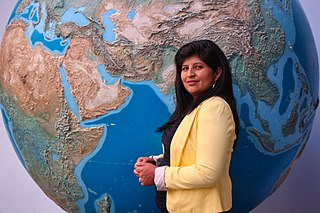
Irma Aracely Quispe Neira is a Peruvian-American senior astronautical engineer, NASA scientist, academic and researcher. She is known as the first Latin-American woman to lead three successful NASA missions in the United States: Tropical Rainfall Measuring Mission (TRMM), the Lunar Reconnaissance Orbiter (LRO), and James Webb Space Telescope (JWST). Quispe has been a senior flight operations and systems engineer of the successful James Webb Space Telescope launching. She is an official speaker at the NASA and the United States Department of State, professor at Capitol Technology University, and STEM educator.

Makenzie Lystrup is an American planetary scientist and Fellow of the American Association for the Advancement of Science and of SPIE, best known as a prominent voice in civil space projects and science policy. Lystrup is the director of the Goddard Space Flight Center. She has previously served as the vice president and general manager for civil space at Ball Aerospace.

Scarlin Hernandez is a Dominican-American astronautical engineer. She is a spacecraft engineer for NASA’s James Webb Space Telescope at the Space Telescope Science Institute in Baltimore, MD.



















